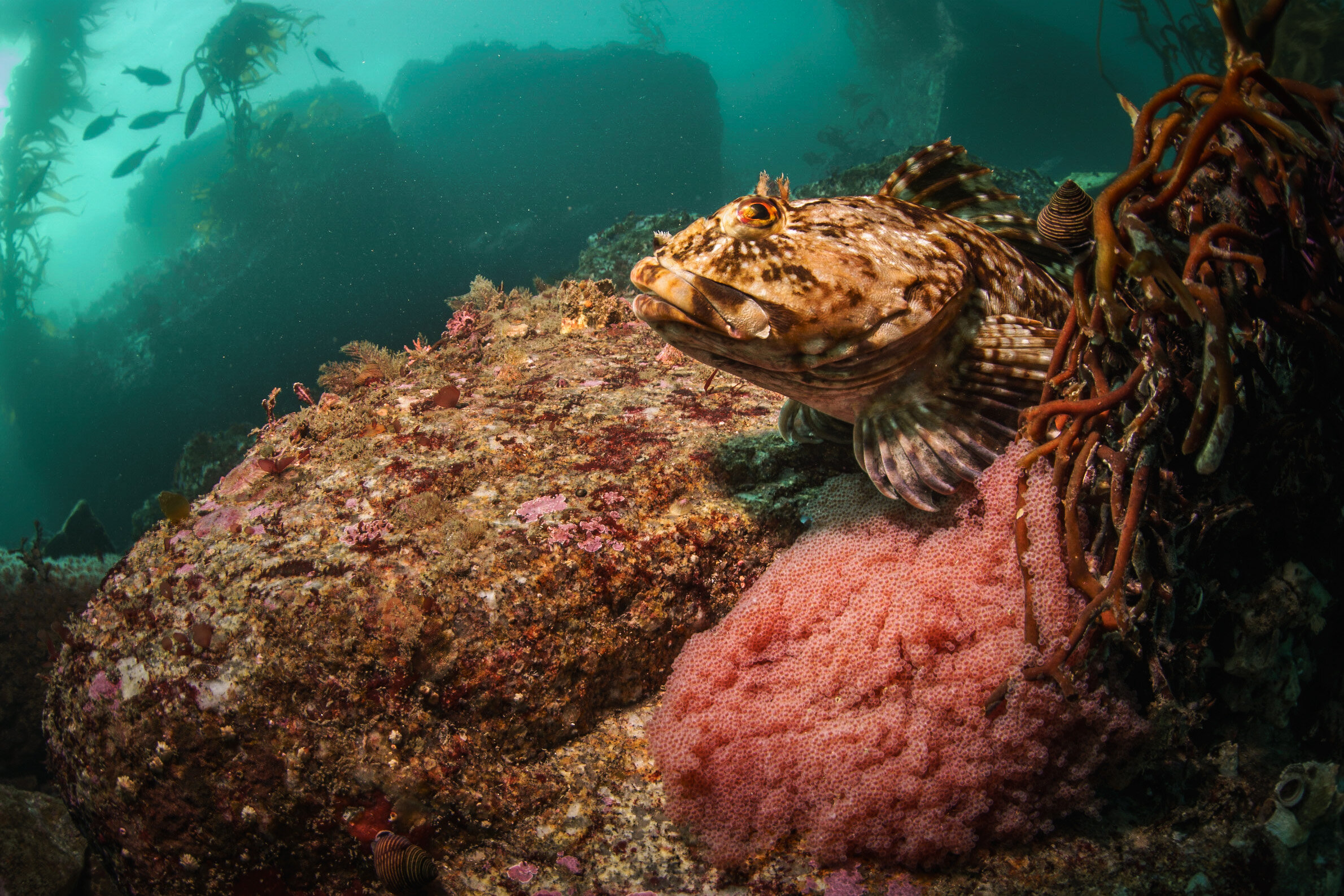Cabezon
"Cabezon" (Scorpaenichthys marmoratus) comes from Spanish meaning "large head". There many interesting facts to learn about this unique and delicious fish but one deadly fact in particular you should absolutely commit to memory - read further to learn!
Hunting Tips
Cabezon (or Cabs as most call them) can be found from Alaska to Baja California in fairly shallow water in caves or near boulder piles. Scan these areas slowly and carefully - don't forget to look on the cave roofs, too! They are extremely well camouflaged and are all-to-easy to overlook. As ambush hunters, they hide and wait for their prey to get before then they attack. You will often find octopus, crabs, mollusks and fish in their distended bellies. About 90% of red colored fish are males, whereas over 90% of greenish fish are females. Females are usually larger than males and can weigh up to 25 lbs and 39 inches! There are Department of Fish and Wildlife size regulations on these fish, so be sure to read up before you pull the trigger - in fact, you should never shoot a fish you can’t ID and confirm that it is a lawful harvest! Keep in mind that fish appear larger in water, so if it looks questionable, don’t shoot.
“The Mindful Spearfisher” Tips
As you can see in the two pictures below, there is a male Cabezon guarding a pile of eggs. So if you happen to be diving and come across a reddish colored Cabezon, take a moment to check if it is guarding eggs before you pull the trigger. By passing up the opportunity to shoot the Cabezon, you give it the opportunity to live and continue guarding the eggs - which means more fish for you and eventually future generations to hunt in the future. We would encourage and applaud you to pause and consider not taking him home for dinner in this case.
Photos by teammate Joe Platko
Eating Tips
There is significant bounty to enjoy when harvesting a Cabezon. The smaller sized Cabezon require more finesse in the fillet process due to how slimy and flimsy they are, but on the positive side, it means you now have an opportunity to practice careful knife skills. Keeping the fish buried in ice will allow rigor mortis to firm it up and will make processing it easier. This is an excellent fish to enjoy the thick fillets, and after you discard the guts, the rest of the fish frame is perfect for making a fish stock due to the large fins and head (try our fish stock recipe here).
Now here is the fish fact that you should commit to memory: most fish roe is insanely tasty and can be added to pastas, eggs, or any other meal you want to add buttery, creamy umami flavor to. However, DO NOT EAT THE ROE of a Cabezon as it is poisonous due to toxic phospholipid (Dinogunellin).
Overall, Cabezon are a great fish to target for a number of reasons. Take a look at our food page for recipe inspiration on how to eat them!


